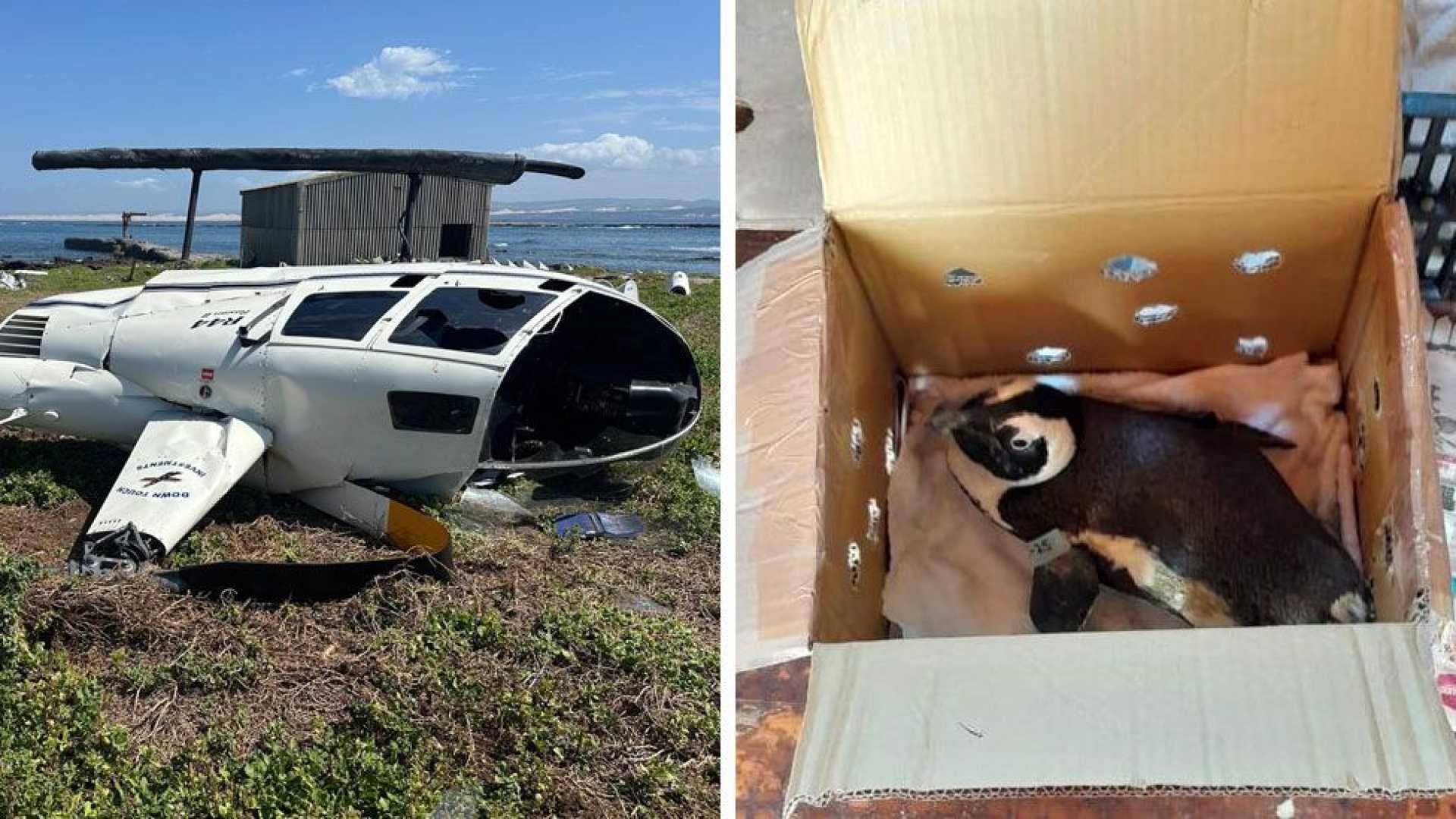News
Unsecured Penguin Causes Helicopter Crash in South Africa

Gqeberha, South Africa — An unsecured penguin in a cardboard box was identified as the cause of a helicopter crash that occurred on January 19, according to a report released this week by the South African Civil Aviation Authority. The incident took place shortly after takeoff from Bird Island in the Eastern Cape.
The helicopter, conducting an aerial survey of the island, plummeted to the ground when the penguin, placed on the lap of a passenger, slid off and impacted the pilot’s controls. Fortunately, no injuries were reported among the helicopter’s occupants, including the penguin.
The report from the aviation authority stated that the incident was a result of “the lack of secure containment for the penguin,” creating a perilous situation for the aircraft. The pilot had performed a risk assessment prior to takeoff but failed to account for the penguin in accordance with Civil Aviation Regulations (CAR) of 2011.
After completing the survey, a specialist had requested the penguin’s transportation back to Port Elizabeth. The report did not specify the reason behind the penguin’s retrieval from Bird Island.
During the takeoff, at approximately 50 feet above the ground, the cardboard box holding the penguin fell off the specialist’s lap and struck the cyclic pitch control lever. This caused the helicopter to roll and ultimately resulted in the rotor blades making contact with the ground, leading to the crash about 20 meters from the launch point.
Despite significant damage to the helicopter, both the pilot and the passengers were unharmed, and the penguin also sustained no injuries. The aviation authority emphasized that all flight situations should adhere to established safety protocols to prevent similar occurrences.
The report concluded that the improper containment of the penguin indicated a lack of suitable preparations for the flight conditions. In response to this incident, the authority recommended that the pilot receive further training on aviation safety procedures.










